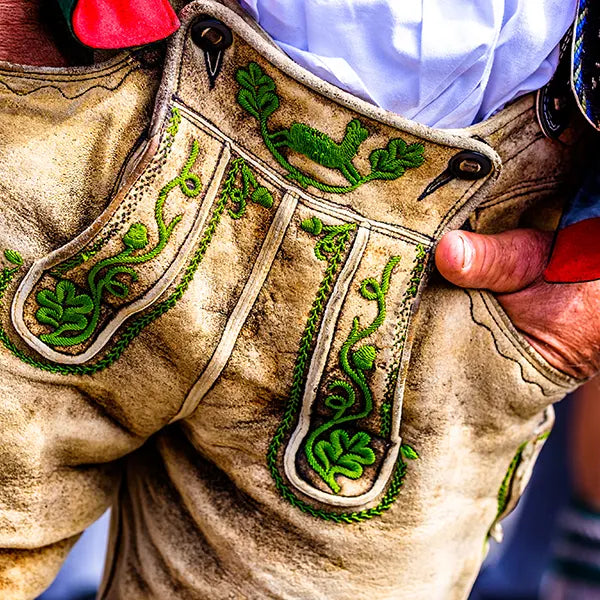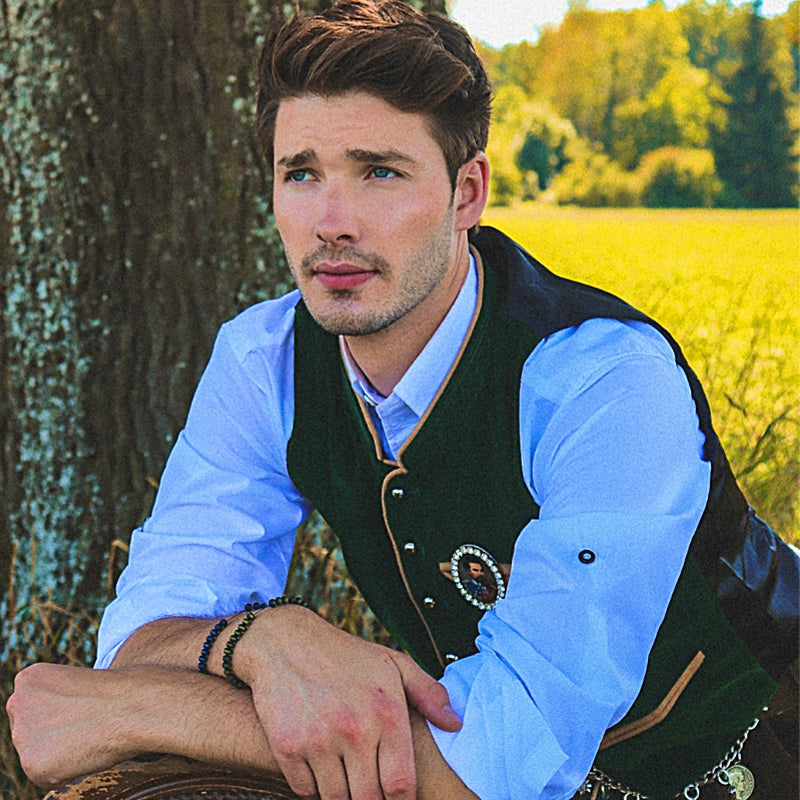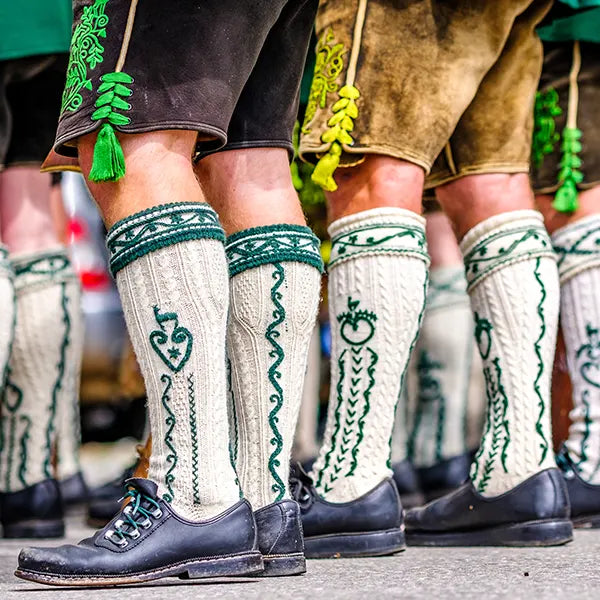10 facts about Bavarian costumes

1. Historical origins: Bavarian traditional costumes have their roots in peasant work clothes of the 19th century. They were worn by farmers and peasants and over time developed into traditional costumes.
2. Dirndl and Lederhosen: The most well-known elements of Bavarian traditional costume are the dirndl for women and the lederhosen for men. The dirndl consists of a bodice, skirt, and apron, while the lederhosen are made of genuine leather and are often worn with suspenders.
3. Diverse styles: Bavarian traditional costumes come in a variety of styles and variations, which can vary from region to region. Each region has its own distinctive features and patterns.
4. Craftsmanship: Bavarian traditional costumes are often handmade. Fine details, embroidery, and embellishments make each piece unique.
5. Symbolic meaning: Traditional costumes can also have symbolic meaning. For example, the type and placement of a bow on a dirndl can indicate whether a woman is single or married.
6. Traditional Costume Sunday: In Bavaria, there is the so-called "Trachtensonntag" (Traditional Costume Sunday), on which many people wear their traditional costumes and proudly display their regional identity.
7. Festive occasions: Bavarian costume is often worn on festive occasions such as Oktoberfest, weddings, folk festivals and other traditional events.
8. Materials and colors: Bavarian traditional costumes are often made from high-quality materials such as cotton, linen, or silk. The color palette often includes natural tones such as green, blue, red, and brown.
9. Traditional jewelry: A complete traditional costume also includes matching traditional jewelry such as necklaces, pendants, earrings, and brooches. This jewelry is often decorated with traditional motifs such as edelweiss or deer antlers.
10. Timeless tradition: Bavarian costumes are a symbol of Bavaria's rich culture and are passed down from generation to generation. They are an expression of pride, local ties, and living tradition.
Bavarian traditional costume is a timeless and fascinating combination of craftsmanship, cultural significance, and individual expression. It embodies the unique beauty of Bavaria and immerses us in a world full of tradition and charm.






